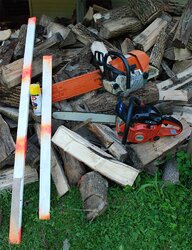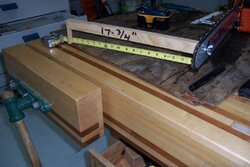LLigetfa said:My father bough a farm from an old Finlander whose family had homesteaded the land. One day my father was measuring a piece of wood on the barn when the old Finlander saw him and laughing said to him, "You use a measure tape on a barn? I never used a measure tape when I built the house!" It showed. There was not a level or plumb element anywhere. I never lost my marbles... I could always find my marbles in the same corner of the room.Tony H said:I must say I am amazed that so many people measure the length...
One of my pet peeves when friends would help to buck up firewood was that they were every which length. It would drive me nuts getting free wood from tree service guys. For some reason they cannot be consistent in length and can't seem to even cut them perpendicular. I could just see the look on their face if I asked them for the rounds to be cut to exactly 20 inches, not 23 and not 17!
I have the same issue, my 18" is not anybody else's 18", when friends & family help cut I get a very mixed length.
I can fit 24" in the BK but prefer 18" +/- 1".
I've been called anal by buddies when helping build my shop (36 X 52) but, I cut every stud exact. It went together square.
That said, I'm only asking for 18" +/- 1" or so. It stacks better & always fits into the stove the same.
The stick helps but is slow.
I may come up with an attached 18 wire on the bar nuts.
Anal, yeh, but I've witnessed worse people problems & behaviors going the other direction.
Now that I'm retired & can do it my way, I do it my way best I can.
I know if I was selling wood 18" +/- 1" it would be that.
After a few weeks of steady cutting I'd probably get good enough to be in specs, but other projects keep getting in the way.
So I'll put a mark on the bar, have my stick handy & when cutting a bunch of logs, like now I'll hook a wire or something to the bar nuts like
jebatty "If I have a lot of logs to cut, then I use a marker fixed to one of the bar nuts. Nothing more than a piece of #9 steel wire with a loop the diameter of the bar bolt to fix it under the bar nuts"
Good one Jim
Thanks,
I learned allot
Good bunch of folks here, lots of knowledge too.





